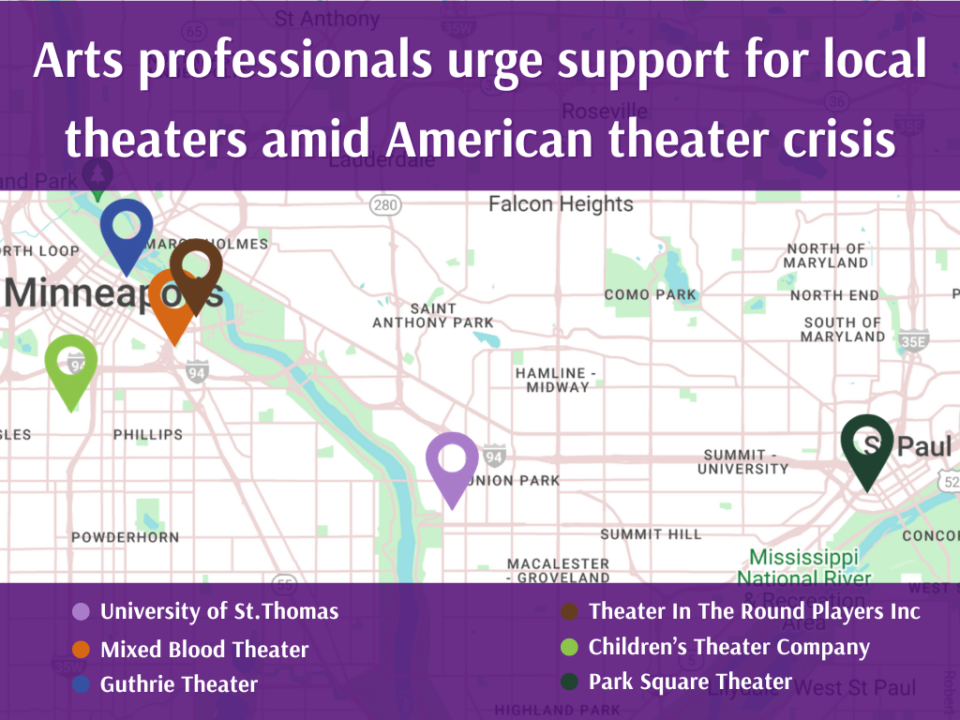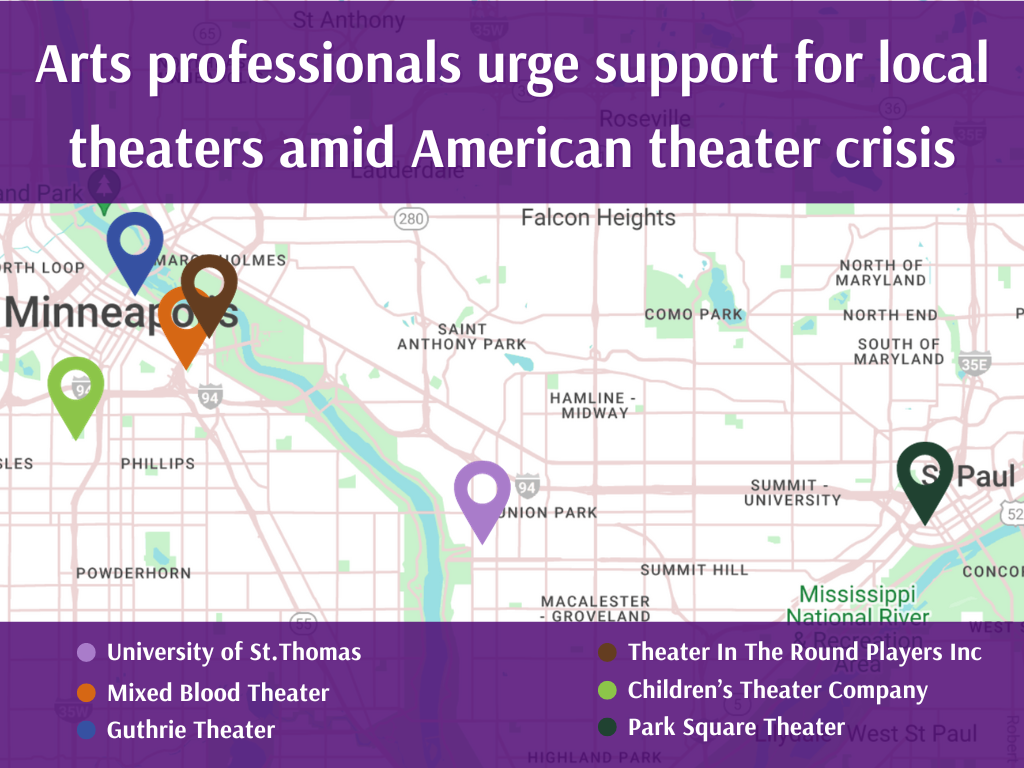
Arts professionals are urging Minnesotans to return to theaters amid a local theater crisis that has seen two to three theaters closing per month across the country.
Nonprofit theaters have been struggling to get their audiences back, which were down 37% in the US in 2021 compared to 2017, according to the Theater Communications Group.
St. Thomas English professor Amy Muse said this issue has been intensified by the rise of streaming content and platforms over the pandemic.
“The American theater is in crisis … people aren’t returning post-COVID,” Muse said.
Muse, who teaches drama and theater, says she thinks that local theaters are most affected by COVID-19 and the popularization of streaming services, but that larger regional theaters should also expect difficulty in getting audiences to return.
“Any giant institutions are really going to be struggling for a while,” Muse said.
These issues are proving difficult for theaters to combat, including St. Paul’s Park Square Theater. It canceled the rest of its season in March due to “revenues that have been significantly less than they were before the COVID-19 pandemic.”
But some larger regional theaters — like the Children’s Theater Company in Minneapolis — have already found their footing.
“This year especially, we’re getting back to numbers that we saw pre-pandemic … we’re bringing back really nostalgic shows,” Suzy Piper, senior manager of stewardship and events at CTC said.
According to Piper, family traditions and nostalgia are driving forces in audiences returning to theater. While the company’s 2023-24 season is debuting original works, much of the season utilizes classic shows to draw in its audience, like “Alice in Wonderland” and “How the Grinch Stole Christmas!”
While classic shows like these draw in big audience numbers, Piper said that finding diverse artists, perspectives and stories are important for broadening theater audiences.
“We definitely have a commitment to new work on top of some of our old favorites,” Piper said.
These types of experiences are essential to preserving the thriving theater community in the Minneapolis-St. Paul area, according to Muse. Minnesota was ranked with eight other states as having one of the highest theaters per capita in 2008. This marks it as one of the best regional theater scenes in the country.
A theater community in crisis could affect many Minnesotans; arts and cultural industries employed over 80,000 workers in the state in 2020, according to the National Endowment for the Arts.
Theater audiences not returning to theaters could also impact Minnesota’s economy as a whole; arts and culture made up 2.9% or $10.9 billion of the state’s economy.
As for how theaters can get audiences back, Muse said theaters should focus on unique and thought-provoking experiences by diverse voices that audiences can’t get at home.
“Theater needs to offer you something really live, tangible and connected to other people,” Muse said.
Theater performances that involve audience participation and engagement to rival a more relaxed and at-home movie watching experience are key to presenting something new and different for theater audiences, she said.
That means it’s time for theaters to move away from old favorites like “The Addams Family” and “Clue” and give audiences something they’ve never seen before, like challenging reimaginings of classic shows, such as Kate Hamill’s Pride and Prejudice, which plays at the University of Minnesota-Twin Cities in November.
As for supporting theaters right now, Muse urged audiences to give extra support to local and non-profit theaters.
“We live in one of the best theater communities in the US …there are lots of ways to connect (with live theater),” Muse said.
Anya Capistrant-Kinney can be reached at capi2087@st.thomas.edu.
Kevin Callahan can be reached at call2656@stthomas.edu.


Ironic. UST dropped theater years ago.